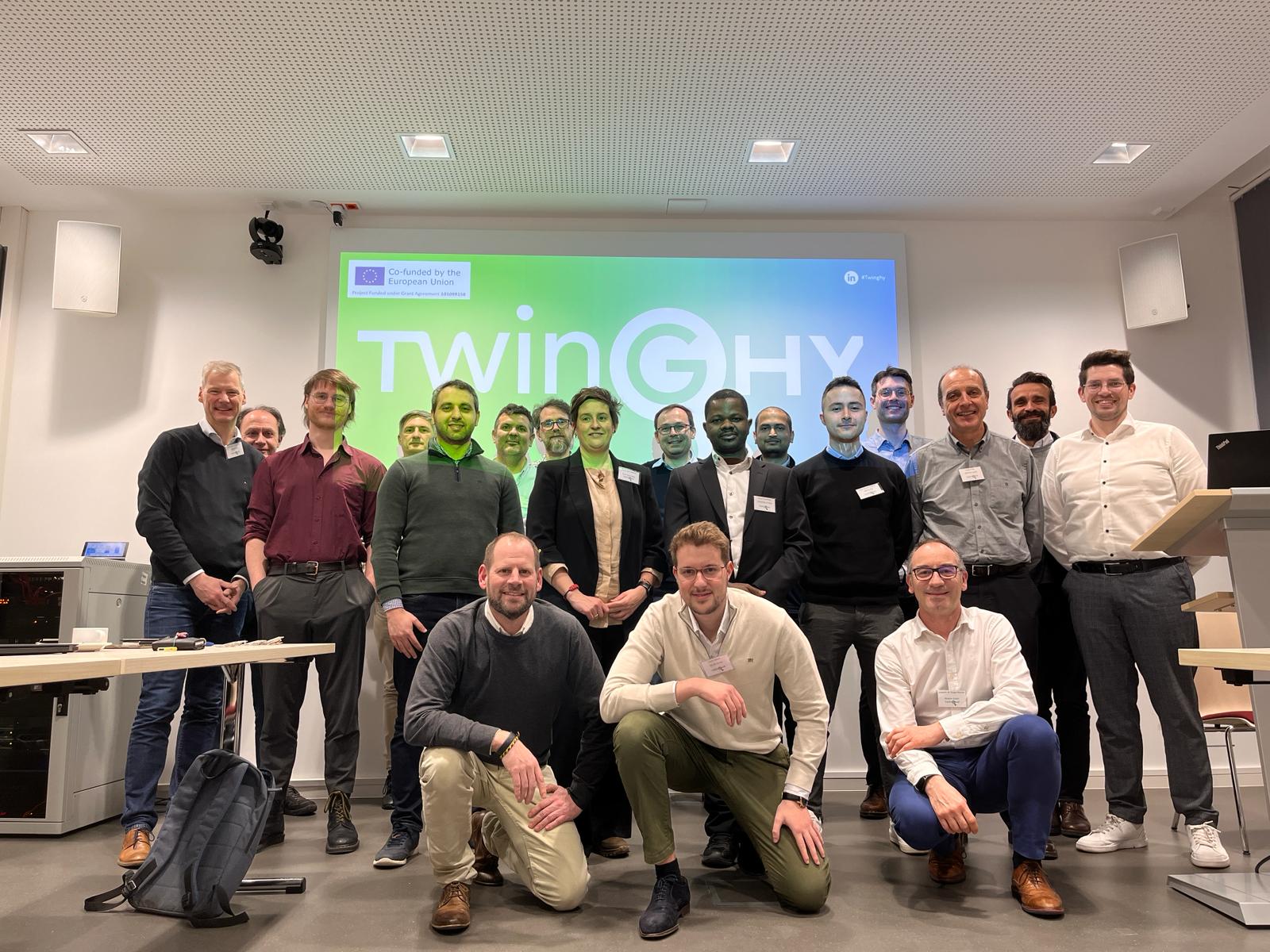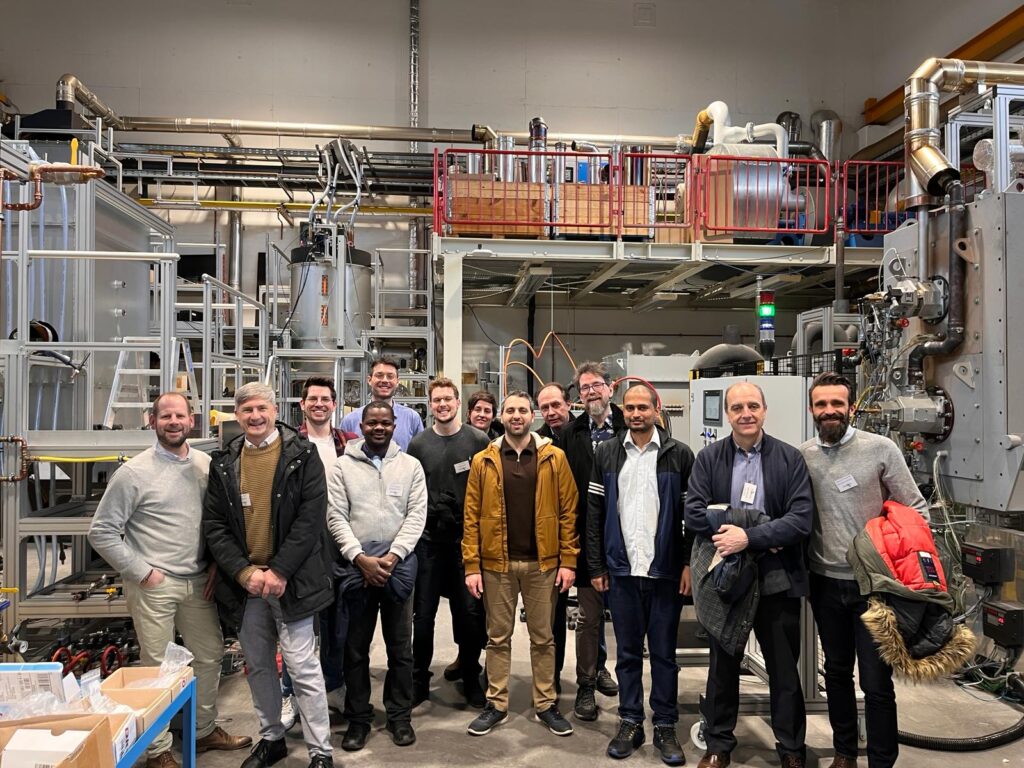
The partners of the TWINGHY project met on the 21st and 22nd of February 2024 at the premises of RWTH Aachen University (Germany) to exchange research results and to review the progress of the project.
TWINs for Green HYdrogen transition in the steel industry, is a 54-month project co-funded by the European Comission that aims to reduce CO2 emissions through the use of hybrid burners and the digital twin technology.
During the first year of the project, the design of the new burners, the study for the modification of the plant for hydrogen integration and the performance plan for the hydrogen trials were completed. There is also an ongoing study on the effects on the product quality of deploying a Digital Twin of the walking beam furnace at Celsa 3 (Barcelona, Spain).
In words of Sébastien Caillat, R&D Combustion Chief Expert at Fives Stein partner,“Replacing traditional burners with hybrid technology is a big challenge. We have to ensure high quality of the final products and reduce NOx emissions while maintaining the same productivity. The measurement tests that Fives is performing will help us to improve the burner and optimize the process in terms of energy consumption and maintenance”.
During the meeting in Aachen, the partners visited the laboratories of the Institute of Mineral Engineering (GHI) (where tests are carried out to ensure the compatibility of the refractory materials in a hydrogen-heated furnace), and the Department of Industrial Furnaces and Heat Engineering (IOB) where the energy balances, full furnace simulations and LCA are performed.

Ramon Garriga (CELSA), Juan Jiménez (CELSA), Nico Schmitz (RWTH), Francis Gyakwaa (OULU), Johannes Losacker (RWTH), Jordi Gálvez (CELSA), Oiane Gerrikagoitia (FIVES), Hassan Mohanna (FIVES), Imanol Bilbao (FIVES), Sébastien Caillat (FIVES), Shubham (BSC), Jorge Visús (NIPPON), Diego de la Fuente (CALDERYS).
The Project Officer, Danila Conte, also participated in the meeting remotely with a presentation on the guidelines for periodic reports and highlighted the importance of exploitation, communication and dissemination activities.
According to the post of the meeting organiser, “Progress was made in all ongoing work packages. The furnace manufacturer and project partner Fives presented the development of the new, fuel-flexible burners, while gas supplier Nippon Gases presented the development of the necessary infrastructure for the supply of hydrogen. The respective activities are being coordinated by Celsa, in whose furnace the research work has to be reconciled with the day-to-day production cycle. On the IOB side, initial results from the measurement campaign at the reheating furnace in Castellbisbal and the current status of the CFD simulations of individual burners were shared with the consortium. The high-resolution benchmark for these simulations is provided by the Barcelona Supercomputing Centre (BSC) through large-eddy simulations. In addition, the BSC uses the available operating data to model the reheating process using neural networks. The data-driven digital twin obtained in this way is compared with a finite element process model derived from the physical principles of heat transfer by Swerim. In parallel to these developments, the influence of the fuel change on the refractory (RWTH-GHI and Calderys) and on the steel billets (University of Oulu) are being investigated.”